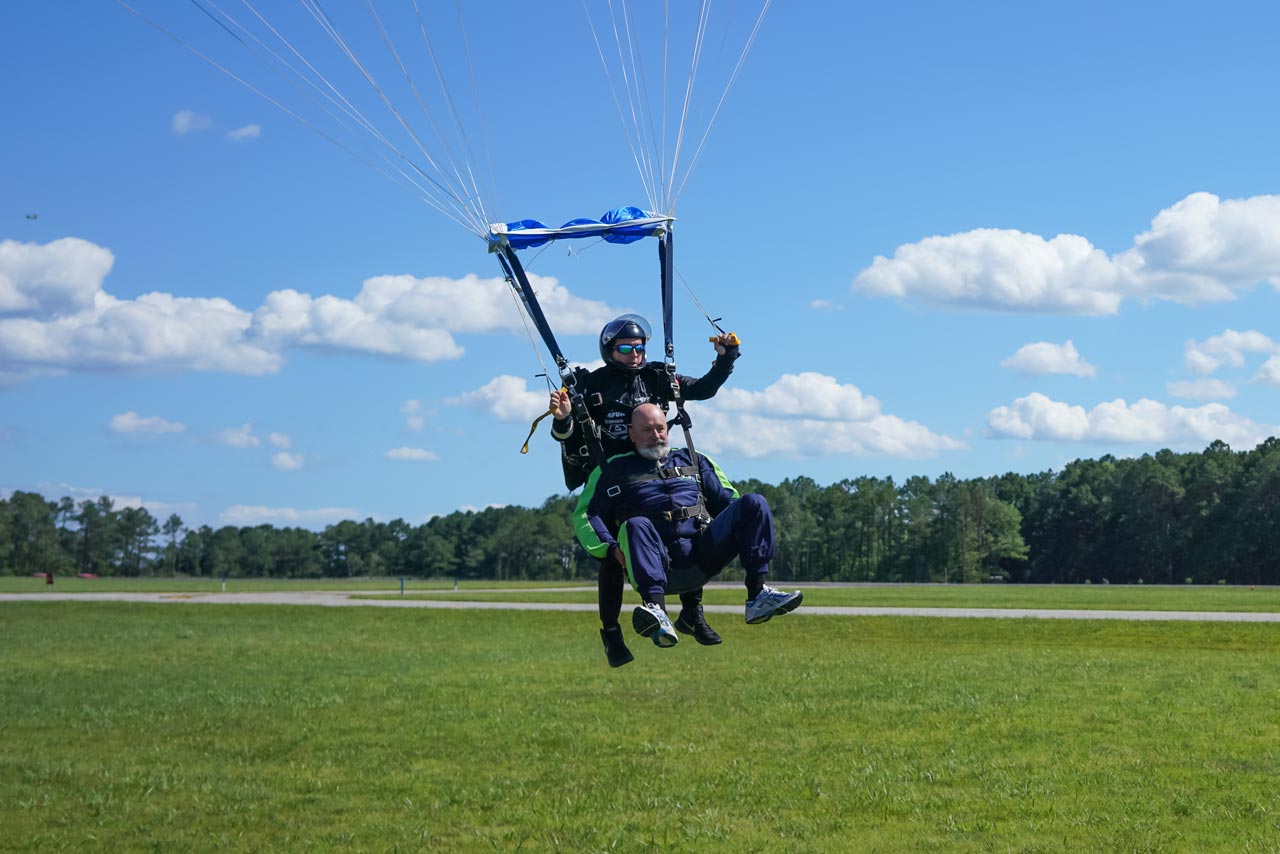Why Do Skydivers Wear Helmets?
General
Posted by: Long Island Skydiving Center 2 years ago
If the sky is just a big empty space with nothing in it, then why do skydivers wear helmets? If you look at video footage or photos of people skydiving, you will see that almost everyone is wearing some kind of head protection, and this is for some good reasons. Compared to other extreme sports, skydiving injuries of any kind are actually pretty rare. Of course, risk is involved – that’s part of the appeal of extreme sports – and much of which can be mitigated by common sense, and top-quality skydiving gear and equipment. Here are some examples of why helmets are an important part of your skydiving kit …

Inside The Aircraft
The planes most often used for skydiving are relatively small – and offer a different experience from the typical flight experience. For starters, all of the passenger seats are removed, in part to facilitate getting in on the ground and out in the sky, all the while wearing a parachute. Secondly, you sit on the floor with your back facing the pilot for the duration of the climb to altitude. When it’s go-time, you carefully navigate under the low roof toward the door. Getting this right requires a bit of coordinated clambering, and bonking your head on the roof or the doorframe can happen in the process. Even though it would likely be minor, no bonk is bueno. Here’s our first hooray for the skydiving helmet!

In Freefall
Skydiving solo is great, and sharing the sky with your friends is truly amazing. Successful group jumps require a solid plan of action that everyone knows before even climbing into the plane – because if each jumper knows their job, crashing into each other is unlikely. The creation and execution of a jump plan is an essential part of training to be a skydiver. That said, bumping into each other does happen sometimes. Little bumps can be part of the fun; big bumps not so much. Wearing a suitable helmet is critical to protecting your noggin from a potentially serious injury.
During Landings
With practice, landing a parachute is not difficult. And, when done correctly, it can be tiptoe soft. But preparing for touchdown introduces another element that’s best approached with a helmet: the ground. It would definitely be a shame to complete the most awesome skydive ever, only to trip on landing and whack your hat rack.

Cameras
Wearing a GoPro or other camera during a skydive is a huge and exciting milestone that comes with 200 jumps and your C License. Skydivers attach cameras to all sorts of mounts – at the wrist, chest, foot – but the one spot that is sure to catch all the action is right above your eyes, on your handy-dandy helmet. Camera mounts are small, low profile and sleek so as not to pose a snag-related safety issue.
Types of Helmet
There many skydiving helmets to choose from, ranging from simple to fairly fancy. The most prominent feature to choose between is open-face versus full-face. An open-face skydiving helmet has no visor, allowing the sensation of wind on your face but not wind in your ears, therefore improving your ability to communicate. Skydivers on student status are required to wear an open-face helmet. Full-face skydiving helmets are akin to motorcycle helmets with a flip-up visor. These are somewhat quieter on the inside and allow you to wear sunglasses underneath.
The crucial factor to consider when selecting your skydiving helmet is protection – that, should something happen, the helmet you are wearing is an effective piece of safety gear. Students are given an impact-rated lid, but once you’re licensed you choose your own. Choose wisely!
Tandem Skydiving
You may have noticed that tandem skydiving students don’t wear helmets. One very important reason for this is because – being positioned in front – the student might inadvertently (literally) impact their instructor in back. Tandem students have the benefit of a highly-experienced instructor at every step of the process, making important decisions for their collective safety and guiding the student with precision. These things combined mean that it’s actually safer for tandem students to not wear a helmet during their skydive.

Some dropzones do, however, provide students with leather, chin-strap frap hats. More abrasion than brain protection, frap hats have the added perk of keeping long hair out of faces and rigging.
—
Ready to get your head in gear and get sky high? Come make memories to last a lifetime and jump tandem with us! (Pro Tip: get the video – you only make your first skydive once!)
Categories:
You May Be Interested In:

The Amazing Benefits of Adrenaline
2 days ago by Long Island Skydiving Center

Can You Skydive With Asthma?
3 months ago by Long Island Skydiving Center

A Guide on How To Go Skydiving
4 months ago by Long Island Skydiving Center

Last Minute Experience Gifts
5 months ago by Long Island Skydiving Center
